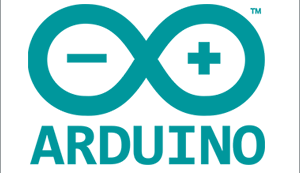A Small Introduction to Arduino
March 28, 2015
on
on

Probably the Most Influential Open-source Hardware Initiative Ever
In 2003 a Colombian student named Hernando Barragán started work on a programming language and IDE which he released in 2004, he called it ‘Wiring’. He crafted it as part of a program at the Interaction Design Institute of Ivrea, in northern Italy, under the supervision of software architect Massimo Banzi. The software was based on ‘Processing’, a language specifically built for visual arts initiated by Casey Reas and Benjamin Fry at the MIT Media Lab. As the project got more ambitious, more members joined the team which now included Massimo Banzi (Italy), David Cuartielles (Spain), Tom Igoe (US), Gianluca Martino (Italy) and David Mellis (US).
They needed something affordable, easy, straight-forward, that would blow away the veil of mysticism that surrounded electronics, allowing anyone to code their own applications without the need to check out a data sheet and thereby to be seen to be a nerd. Time was also the enemy, the Institute at Ivrea was close to running out of funds and they were about to shut down the faculty. All the work they had invested could come to nothing, how could they preserve their legacy? Both Processing and Wiring were open source, so they decided to follow the same philosophy with the hardware as well. Since then, well, we’ve seen how Arduino has helped transform the electronics industry and the rest, as they say, is history. Arduino is what happens when engineers don’t think as conventional engineers. You know what? That’s great; let’s keep thinking out of the box and open source, out loud.
It’s no secret that we love the system too. We offer nearly every board out there in our store as well as all official kits like the Materia 3D printer. Check them out here!
In 2003 a Colombian student named Hernando Barragán started work on a programming language and IDE which he released in 2004, he called it ‘Wiring’. He crafted it as part of a program at the Interaction Design Institute of Ivrea, in northern Italy, under the supervision of software architect Massimo Banzi. The software was based on ‘Processing’, a language specifically built for visual arts initiated by Casey Reas and Benjamin Fry at the MIT Media Lab. As the project got more ambitious, more members joined the team which now included Massimo Banzi (Italy), David Cuartielles (Spain), Tom Igoe (US), Gianluca Martino (Italy) and David Mellis (US).
They needed something affordable, easy, straight-forward, that would blow away the veil of mysticism that surrounded electronics, allowing anyone to code their own applications without the need to check out a data sheet and thereby to be seen to be a nerd. Time was also the enemy, the Institute at Ivrea was close to running out of funds and they were about to shut down the faculty. All the work they had invested could come to nothing, how could they preserve their legacy? Both Processing and Wiring were open source, so they decided to follow the same philosophy with the hardware as well. Since then, well, we’ve seen how Arduino has helped transform the electronics industry and the rest, as they say, is history. Arduino is what happens when engineers don’t think as conventional engineers. You know what? That’s great; let’s keep thinking out of the box and open source, out loud.
It’s no secret that we love the system too. We offer nearly every board out there in our store as well as all official kits like the Materia 3D printer. Check them out here!
 |
Co-founder Massimo Banzi named the project ‘Arduino’ in honor of the ‘Bar di Re Arduino,’ a pub in the town of Ivrea. If you are up for a visit, make sure to do it during the Battle of the Oranges. |
Read full article
Hide full article


Discussion (1 comment)